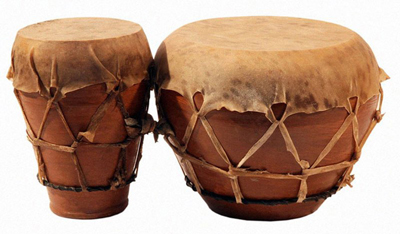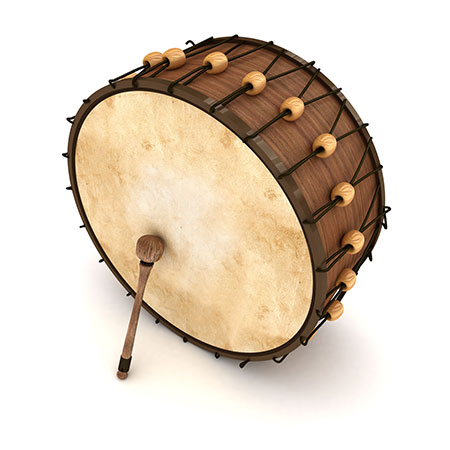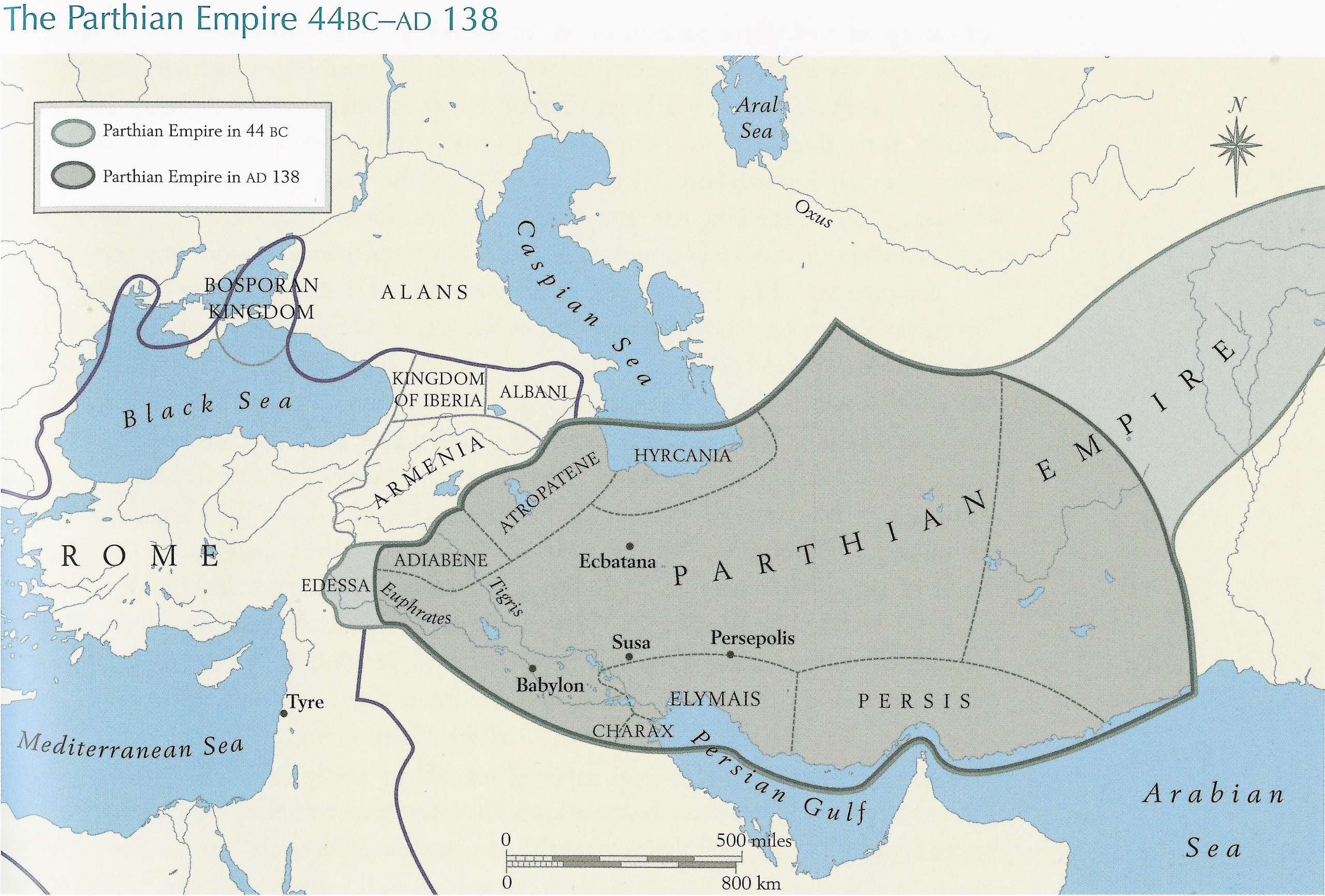The article below on Parthian and Central Asian martial music was originally sent to Kavehfarrokh.com on January 8, 2012. The abstract of that article is printed further below. The full article is available for download in Academia.edu:
===============================================================
The use of music on battle-fields always had for such objects as to give the signal, to inspirit one’s own soldiery and to frighten foes. The Parthians, according to the classical authors (Plutarch, Crassus 23.9; 26.4; Justin XLI. 2.8; cf. Herodian IV. 11,3), employed in the war not horns or trumpets but kettle-drums (tympana).

The Iranian Naqareh (a type of timpani) (Photo source: Beytoote) which like the Koos (a type of large bass drum) has been part of the inventory of the martial music of the armies of Iran in the pre- and post-Islamic eras
The tympanon, when being struck with sticks, uttered first toneless sounds turning then into those like both the beastly howl and peals of thunder, which were heard for a distance of several kilometres, inspiring great fear on the enemy (as this was, for the most striking instance, at the famous Battle of Carrhae in 53 BC). This is so impressive, one membraned instrument must have been brought to Iran by the nomadic founders of the Parthian Arsacid empire from their steppe homeland, and the Medieval Middle Asian kettle-drums called nagora probably originated from it. A battle drum (tumbag) is referred to in a Sasanian-date Pahlavi, but Parthian-age by origin, text Ayyatkar i Zareran (§26). Gurgani’s in c. poem Vis u Ramin, composed in 1050 AD and going back most likely to a Parthian model again, speaks of battle drums as well.

The Iranian Koos (a type of large bass drum) which has been in Iranian armies since antiquity (Photo source: Tarafdari).
A dominant role of the percussion instruments in the battle music of the Parthians may be explained by some peculiarities of their warfare. For Middle Asia (or western Central Asia) proper, there is a unique find of a ceramic giblet-shaped, one membraned drum (tablak) which has been recently discovered at Tali Khamtuda (Northern Sogdia), in a warrior’s (?) burial dated to the 3rd or 4th century AD. Drum-type instruments are depicted on monuments of art, belonging to Late Antiquity and early Medieval times, from Airtam (Northern Bactria), Toprak-kala (Khorezm), Afrasiab, Penjikent, Khirman-tepe (Sogdia). All of (two-membraned) and “sand-glass”-shaped drums; however, those of different shapes and kettle-drums are also met. At least, some of these instruments could be quite employed for the accompaniment to military actions.

[Click to Enlarge] Map of the Parthian Empire in 44 BCE to 138 CE (Picture source: Farrokh, page 155, Shadows in the Desert: Ancient Persia at War-Персы: Армия великих царей-سایههای صحرا–).
In addition to the pictorial evidences, the use of drums in Early Medieval Middle Asia, including on battle fields, is reported by the Arabic and Chinese sources.



